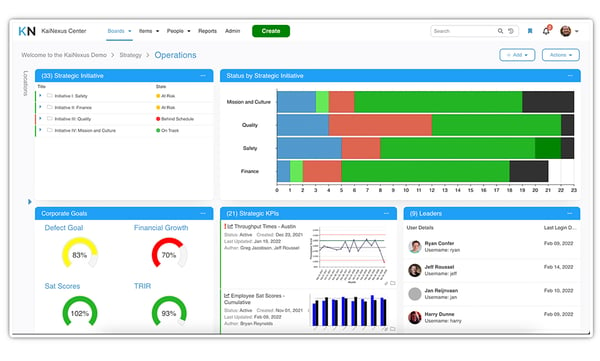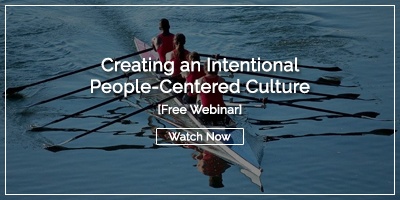
Building a continuous improvement culture requires active leadership participation, systematic response to employee ideas, and recognition of incremental progress. Leaders must model improvement behaviors, remove barriers for their teams, and celebrate small wins alongside major projects to create lasting organizational change.
Why Is Culture Critical for Continuous Improvement Success?
Tony Hsieh, the former CEO of Zappos, famously said, “If you get the culture right, most of the other stuff will just take care of itself.” He might not have been thinking of a continuous improvement culture specifically, but he’s right. Culture is the foundation on which success is built.
Strong leaders build the foundation for the culture they want to achieve. If you believe that the path to success for your organization involves continuous improvement, these actions will help you create the culture you need.
What Actions Build a Strong Continuous Improvement Culture?
1. Don’t dictate, participate
Your employees will judge your commitment to improvement by what you do, not what you say. Set the right tone by rolling up your sleeves and getting to work alongside the rest of your team. Build a team of leaders who continuously improve their own processes and talk about it every chance they get. Once people see that improvement is worth the time of the leadership team, they'll know that it's worth their own time as well.
2. Close the loop
Did you know that companies with a strong culture of continuous improvement implement about 80% of their employees' improvement ideas? That's not to say that the ideas they get are better than most other organizations. Rather, that number reflects the fact that all ideas are followed up on right away—even the bad ones.
A good Kaizen coach knows that a bad improvement idea still often points to a real opportunity for improvement and takes the time to coach employees in discovering a better solution.
To promote a culture of continuous improvement, make it a policy that all leaders will respond quickly to all suggestions—either give approval to implement the idea or provide coaching to uncover another approach to solving the identified problem.
(For more info, watch this webinar: "How to Be an Influential Kaizen Coach")
3. Remove barriers to improvement
Employees should be empowered to make daily continuous improvement a part of their own work every day. This means that leaders need to step up and help them secure the time and resources they need to do so.
Some would argue that removing barriers such as these is the most important function of leaders in a culture of continuous improvement. By eliminating barriers for their staff, leaders can empower staff to make so many more improvements. Therefore, a leader's time will be better spent empowering employees to succeed on their own.
4. Welcome improvement of all types
It’s easy to get fixated on improvements that impact the bottom line or have a measurable ROI, but don’t ignore ideas with softer impacts like improved satisfaction, efficiency, or engagement.
Specifically asking for ideas that make people's jobs better, easier, or safer is one way to get an influx of improvement ideas. Another way is to ask people what they could do to provide better goods or services to their customers.
By encouraging this type of improvement, you're building up your new culture. Be patient—financial impacts will follow.
5. Celebrate incremental improvement
A LOT of organizations make the mistake of only doing improvement events and projects. Sure, these things play an important part in an improvement culture, but without daily continuous improvement, you aren't going to spread improvement.
So remember, every improvement does not need to be a major project or event. Little changes can add up to have big results. Incremental improvement is the cornerstone of a culture of continuous improvement.
6. Provide support for improvement
Believe it or not, technology can have a big impact on spreading improvement. It gets more people involved, accelerates the rate of change, engages leadership, and de-silos the organization. Your investment in continuous improvement software that supports improvement both underscores its importance and makes you astronomically more likely to succeed.

7. Recognize and reward improvement work
Recognition and reward play a big part in spreading improvement. A “thank you” from the executive team can go a long way toward helping an employee feel that their efforts are valued. Seeing others recognized in this way can also motivate team members to up their improvement game. Take the time to give a shout-out to the people who are working hard to improve your organization. It doesn't need to be costly or time-consuming. See how continuous improvement software can help.
What Is the Leader's Ultimate Role in Continuous Improvement Culture?
Leadership is fundamentally about creating conditions for people to do their best work—then trusting them to deliver. When you establish the right culture:
- Trust increases throughout the organization
- Fear of failure decreases
- Innovation accelerates
- Improvement becomes self-sustaining
The cultural foundation you build determines whether continuous improvement becomes a temporary initiative or a lasting organizational characteristic.
Frequently Asked Questions About Building a Continuous Improvement Culture
What percentage of employee improvement ideas should be implemented?
Organizations with strong continuous improvement cultures implement approximately 80% of employee suggestions. This high implementation rate reflects effective coaching and rapid follow-up on all ideas, transforming even imperfect suggestions into actionable improvements.
Can you have continuous improvement without software?
Yes, but technology significantly increases success rates. While continuous improvement is possible with manual systems, software accelerates adoption, increases participation, provides better tracking, and helps maintain momentum as the culture scales.
How do you measure continuous improvement culture?
Key metrics include: number of improvement ideas submitted per employee, implementation rate of suggestions, speed of idea review and approval, employee engagement scores, and both leading and lagging operational performance indicators.
What's the difference between Kaizen events and continuous improvement culture?
Kaizen events are focused, time-bound improvement projects, while continuous improvement culture refers to ongoing, daily improvement activities embedded in normal work. Both are valuable, but culture requires the daily component to spread improvement organization-wide.




Add a Comment